Simple step by step guide to understand & implement UTM tags for your business
Table Of Contents
- What is a UTM Tag?
- How are UTM Tags used?
- Tools to create UTM tags (Free & Paid)
- Tracking Analytics
- Best Practices
1) What Is A UTM Tag?
You have a brilliant new business idea. You build an impeccable business strategy & find reliable partners.
You build a website to attract customers and open up your business to the outside world.
And steadily your website gains traction, attracting traffic from all over the globe.
But how will you track the traffic?
How will you figure out which segments of your website or marketing campaigns are the most popular?
How do you understand web traffic to leverage it for better business outcomes?

Here’s where UTM tags come into play.
UTM or Urchin Tracking Module is a custom text that can be attached to existing URLs to create a data point when it is clicked on.
Google collects these datapoints to create a comprehensive graph, allowing you to understand where your website traffic is coming from.
This helps in discerning successful and popular marketing campaigns from unsuccessful ones, enabling you and your team to focus and optimize successful strategies while phasing out the unsuccessful ones.
UTM tags can be used to track traffic from social media, emails, ads and more. These form the ‘source’ of your traffic, as they tell you where your traffic is coming from.
However, in building and expanding your business, you may also like to know which parts of your website are most popular. For example, which article or product type attracts most views.
To help this, UTM tags are armed with a ‘content’ parameter which breaks down all your website traffic by the views received by each segment of the website.
Example UTM Tag for a Google Ad Campaign
greymetrics.com?utm_source=google&utm_medium=cpc&utm_campaign=product_launch
UTM tags are a versatile tool that can be used in a multitude of ways to analyse traffic. They not only tell you why and how you get your traffic but also track referrals and returning users.
UTM tags work in conjunction with Google Analytics to help you understand the information and analyse patterns within your traffic.
A wholesome understanding of UTMs merits an analysis of their anatomy.
There are 5 different parts to UTM parameters.

Source, Medium, Campaign, Term, Content
1. Source
- Source that brings in the traffic (Google, Facebook, LinkedIn, Newsletter)
- utm_source=google
2. Medium
- Marketing medium used (Email, Paid Social Ads, Paid Search)
- utm_medium=cpc
3. Campaign
- Name of your campaign (Product Launch, Flash Sale, Content Distribution)
- utm_campaign=product_launch
4. Term
- Useful to track keywords on paid search (Connect Google Ads & Google Analytics to track automatically)
- utm_term=marketing_report
5. Content
- To differentiate multiple links on the same URL
- utm_content=product_ads
2020 represents a time of burgeoning social media, allowing service providers to engage with consumers in multiple ways.
Platforms such as Instagram, TikTok, Snapchat, Facebook, etc create a wide scope of potential consumers but also warrant business mishaps.
In this confusing and exhausting milieu of social media, ads and aggressive marketing, UTMs allow businesses to invest in targeted business strategies for optimal outcomes.
UTM tags save time, money, effort and identifies reliable customer base that can be optimized to grow the business.
2) How Are UTM Tags Used?
UTM Tags are used to measure effectiveness of marketing campaigns. In order to measure, effective tagging plays a crucial role.
How To Add UTM Tags On Google Ads
Marketers have 2 options of tagging Google Ads
1) Autotagging – Google Ads Automatically Tags The URL’s Clicked.
This option needs to be enabled from account settings inside Google Ads

After auto-tagging is enabled, every URL click from ads will contain a gclid (Google Click ID)

This is a code that can only be deciphered from Google Analytics.
Most third party tools won’t be able to decipher this ID & if you plan to use tools such as segment, this may not be helpful.
2) Manual Tagging – Manual Tagging With Destination URL
Destination URL is tagged manually with a UTM builder tool & the result appears as below
These parameters can also be read by third party tools in addition to Google Analytics

How To Add UTM Tags On Facebook Ads
Adding UTM tags on Facebook Ads is straightforward.
Go to FB Ads & choose Website Visits as objective.
In the ad creation, enter destination URL & you will notice a “Build a Parameter” link

Using this link, UTM parameters can be built that would show up in analytics tools
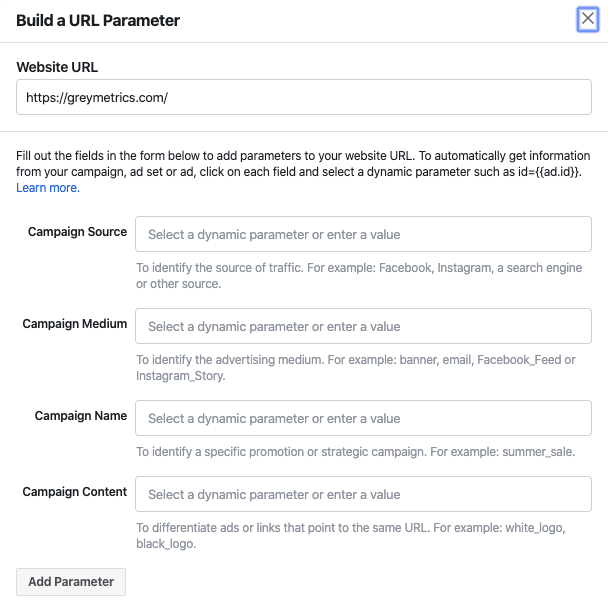
(Note – URL Parameters are the same as UTM tags)
3) Tools To Create UTM Tags (Free & Paid)
Google URL Builder is a simple to use tool for building UTM tags that can be used both for social media, blogs & PPC campaigns

Rebrandly is a branded URL shorterner with built in UTM parameters. If branded short URL’s with UTM tags is on your mind, try Rebrandly.
4) Tracking Analytics
All the UTM information can be easily tracked with Google Analytics.
Acquisition –> All Traffic –> Source/Medium
The number of users, new users, revenue, website usage statistics can be found broken down by source/medium parameter
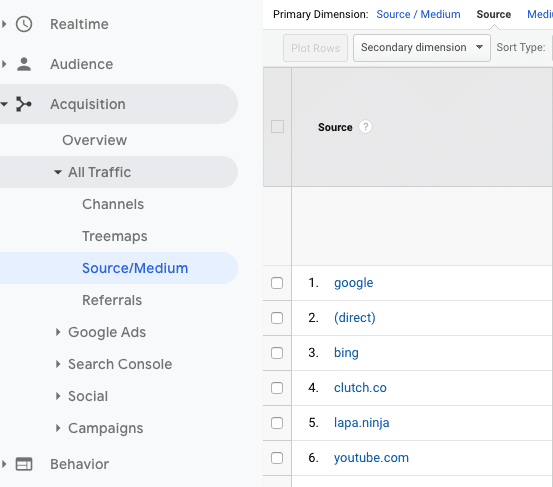
5) Best Practices
Best practices for UTM tags by marketing experts
Best Practice # 1 – Be Consistent In Naming Conventions
Source – Referrer of visits. Use sites that bring in the traffic (Google, Facebook, LinkedIn, Newsletter)
Medium – Marketing Medium (Email, Paid Social Ads, Paid Search)
Google suggests these standard practices to help with maintaining consistency.
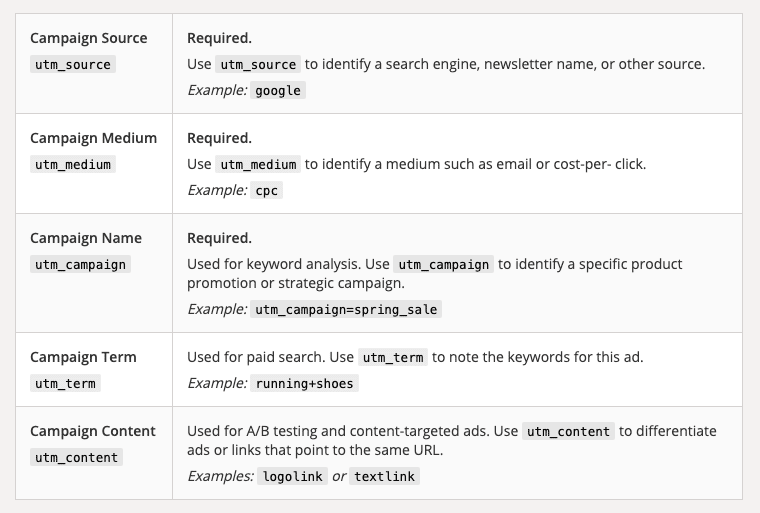
Best Practice # 2 – Use URL Shorteners
URL Shorteners like Bitly help shorten the size of URL’s to a mangeable length.
The shorteners also allow the links to be shortened with your own brand
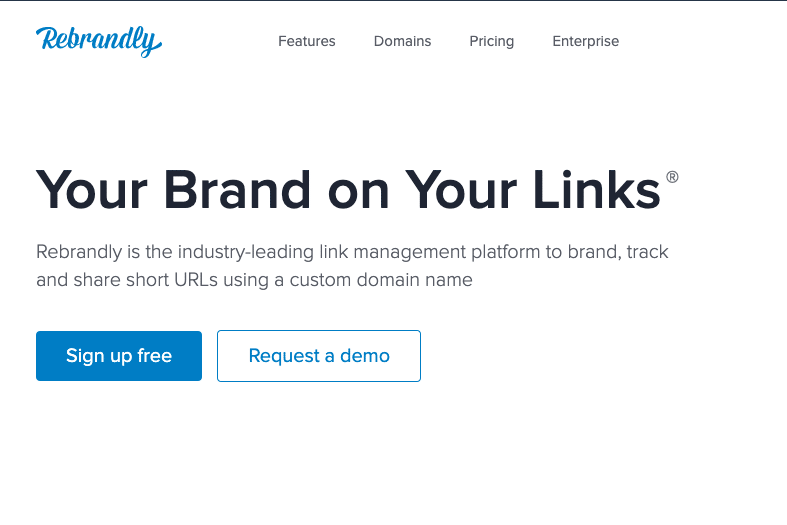
You can maintain your own brand while shortening & view detailed analytics.
Best Practice # 3 – Choose Professional UTM Builders
Savvy marketers use Professional UTM Builders (Terminus App, UTM.io) to enforce consistency of UTM Tags in your team
Best Practice # 4 – Use Only The Variables You Need
URL Builders have 5 fields
Depending on your campaign, use the most appropriate ones & leave the rest.
It isn’t mandatory & neither advisable to use all fields at all times
A sample example of what fields to use for 2 different campaigns is illustrated below
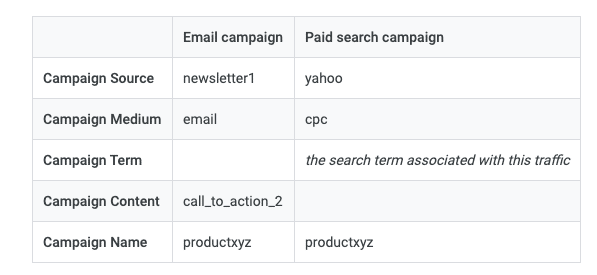
Let us know how you use UTM tags for your business. If you have a unique suggestion, send across to us & we will consider including it on our blog.
Track all your marketing data on one dashboard with GreyMetrics. Try free for 14 days